Tools Required
| • | J 44856 Pinion Depth Shim Selector |
| • | J 44865 Spline Socket |
| • | J 44868 Housing Spreader |
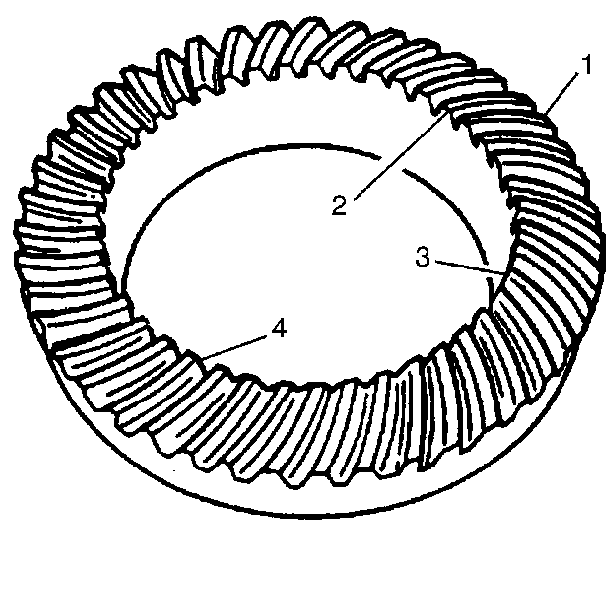
Before the final assembly of the differential, perform a gear tooth pattern inspection.
This contact pattern inspection is not a substitute for adjusting the pinion depth and backlash. Use this method in order to verify the correct running position of the ring gear and drive pinion. Gear sets which are not positioned properly may be noisy, have a short life or both. A pattern inspection ensures the best contact between the ring gear and the drive pinion for low noise and long life.
Gear Tooth Nomenclature
The side of the ring gear tooth which curves outward, or is convex, is the drive side (4). The concave side is the coast side (3). The end of the tooth nearest the center of the ring gear is the toe end (2). The end of the tooth farthest away from the center is the heel end (1).
- Apply the pattern inspection chemical Saturn P/N 1052351 to all of the teeth of the ring gear.
- Install the dial indicator on the cover at the top of the bearing bore. Preload the indicator and zero it out.
- Install the J 44868 on the cover.
- Spread the cover while measuring the movement. Do not spread the cover more than 0.30-0.40 mm (0.012-0.016 in).
- After the spread is reached, remove the dial indicator.
- Install the cover.
- If a spread cover will not go over the shims and bearings, use a C-clamp and J 44856-10 . Tighten the C-clamp on the disc. This will straighten out the shims and bearing races.
- Install the 4 (M8) cover bolts and tighten in a criss-cross pattern.
- Remove the J 44868 .
- Install 4 (M10) cover bolts and tighten in a criss-cross pattern.
- Use J 44865 and an inch pound needle type torque wrench to check assembled rolling torque. Torque should be 2-4 N·m (21-32 lb in).
- Use J 44865 and a breaker bar over the pinion shaft.
- Install an axle shaft into the differential bore.
- Hold the axle shaft with a gloved hand applying pressure while turning the pinion shaft 10 times in the clockwise direction and 10 times in the counterclockwise direction.
- Remove the axle shaft.
- Install J 44856-7 (2) into one side of the differential axle bore and tighten the nut to lock the tool in place.
- Attach the dial indicator to the housing. Measure from the line marked on J 44856-7 (2). Zero out the dial indicator.
- Install the J 44856-8 (1) in the opposite side axle bore.
- Use a speed handle to rotate the differential back and forth to measure the backlash. The backlash should be 0.125-0.225 mm (0.005-0.009 in).
- Remove the rear cover bolts.
- Remove the cover.
- Observe the pattern on the ring gear teeth. Compare the pattern with the following illustrations. Use the legend below:

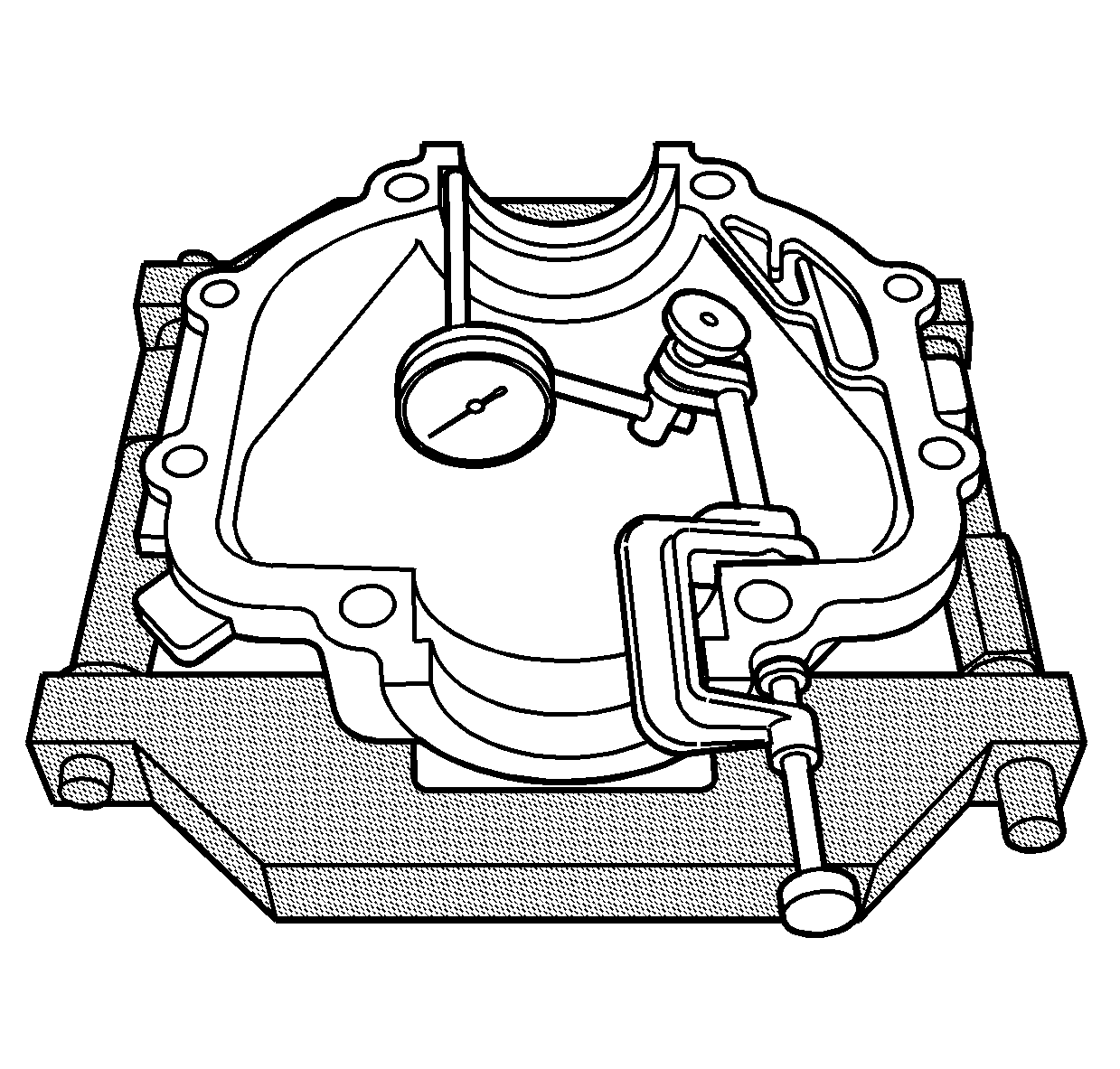
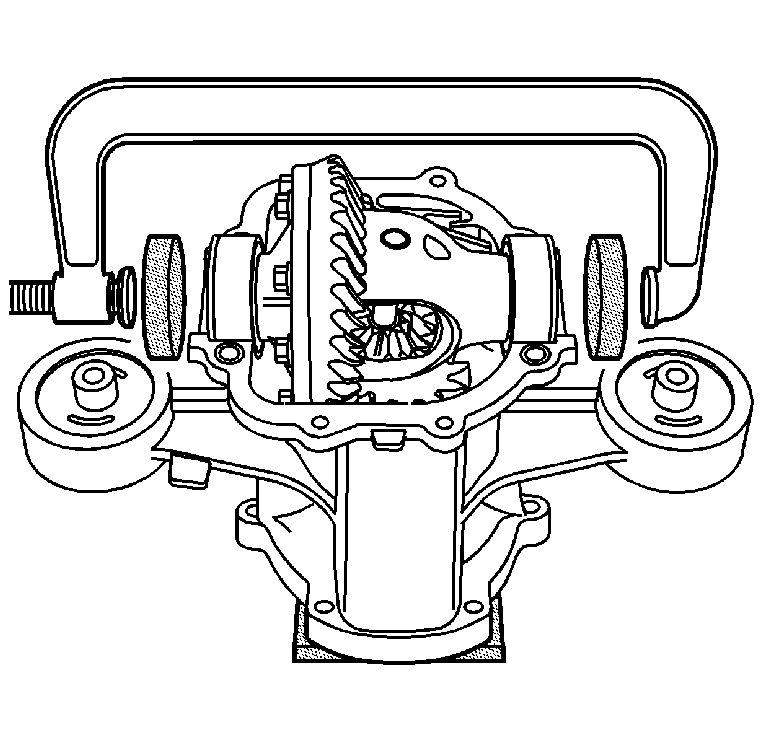
Important: Do not apply sealer to the housing or cover at this time.
Notice: Refer to Fastener Notice in the Preface section.
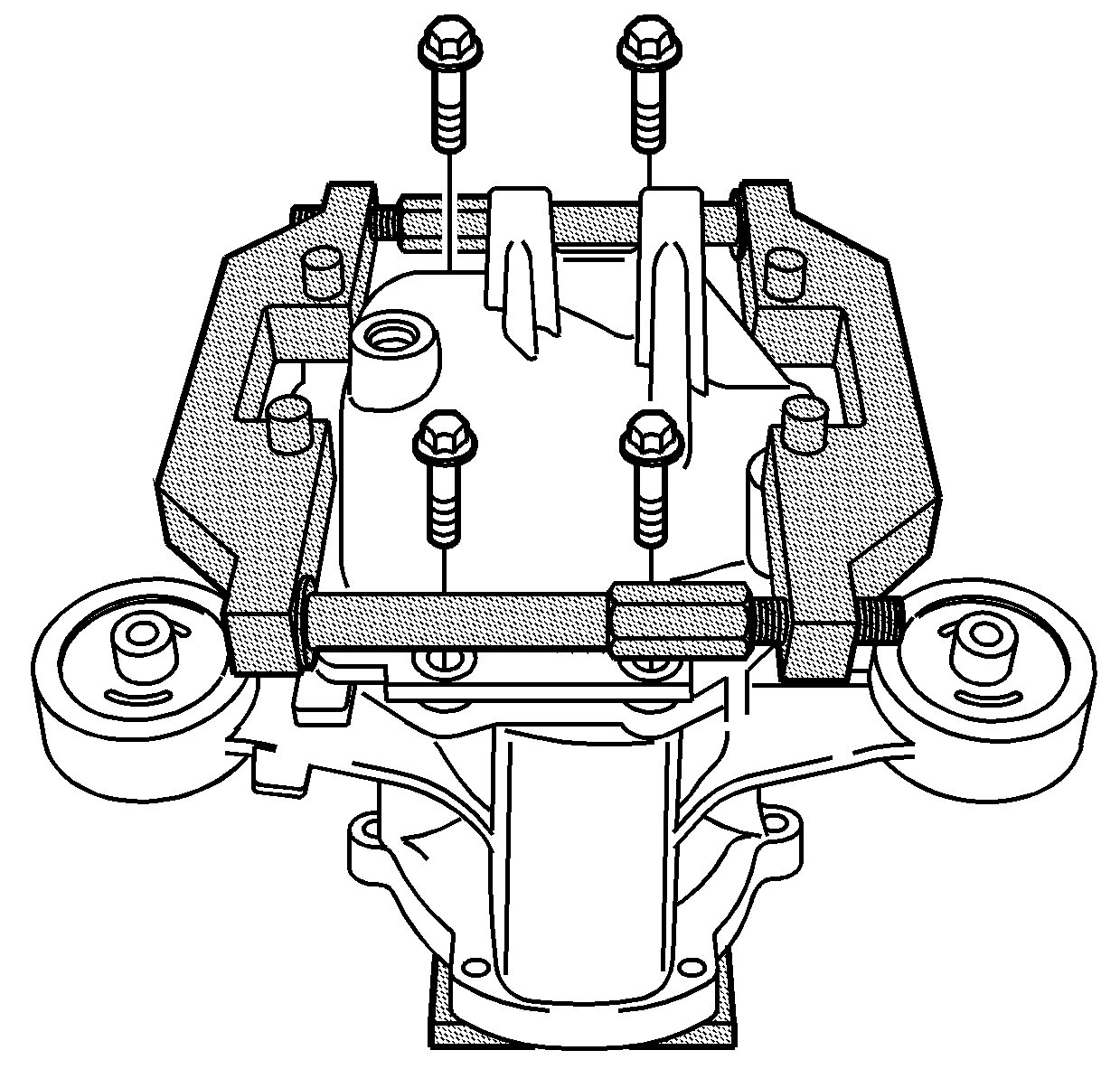
Tighten
Tighten the cover bolts (M8) to 24 N·m
(18 lb ft).
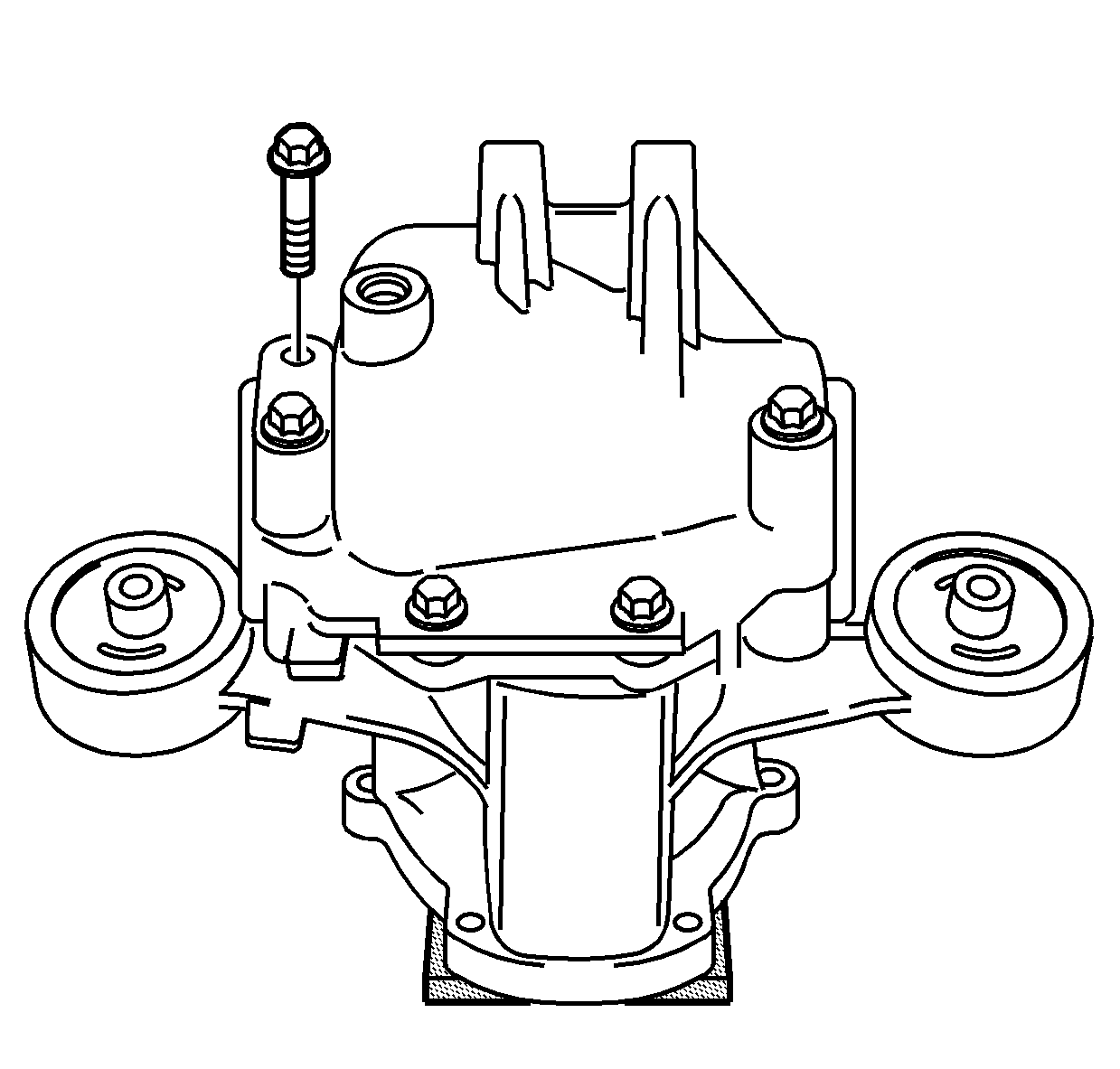
Tighten
Tighten the cover bolts (M10) to 52 N·m
(38 lb ft).

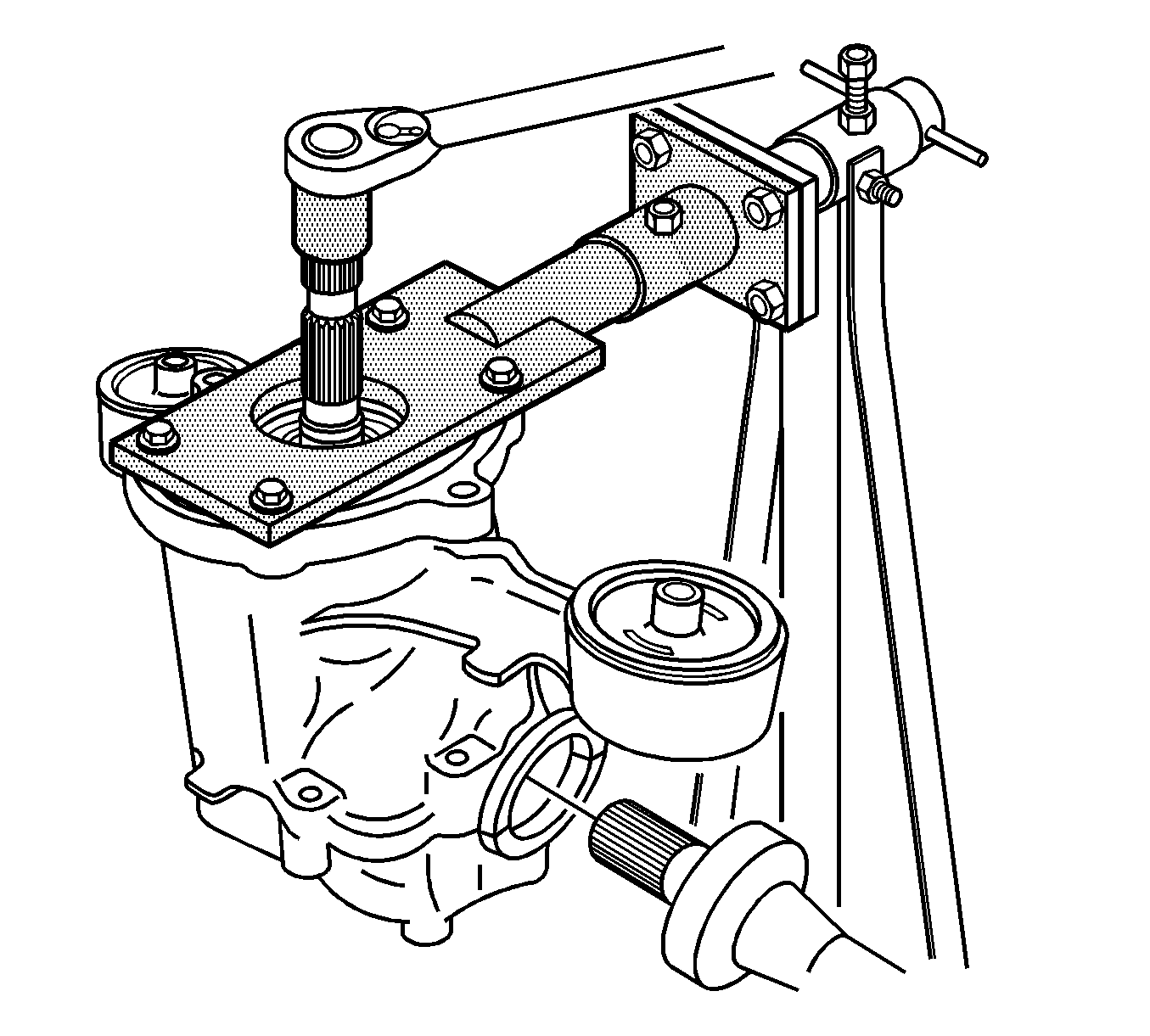
The axle preload must be applied to the gear set to perform the proper pattern inspection.
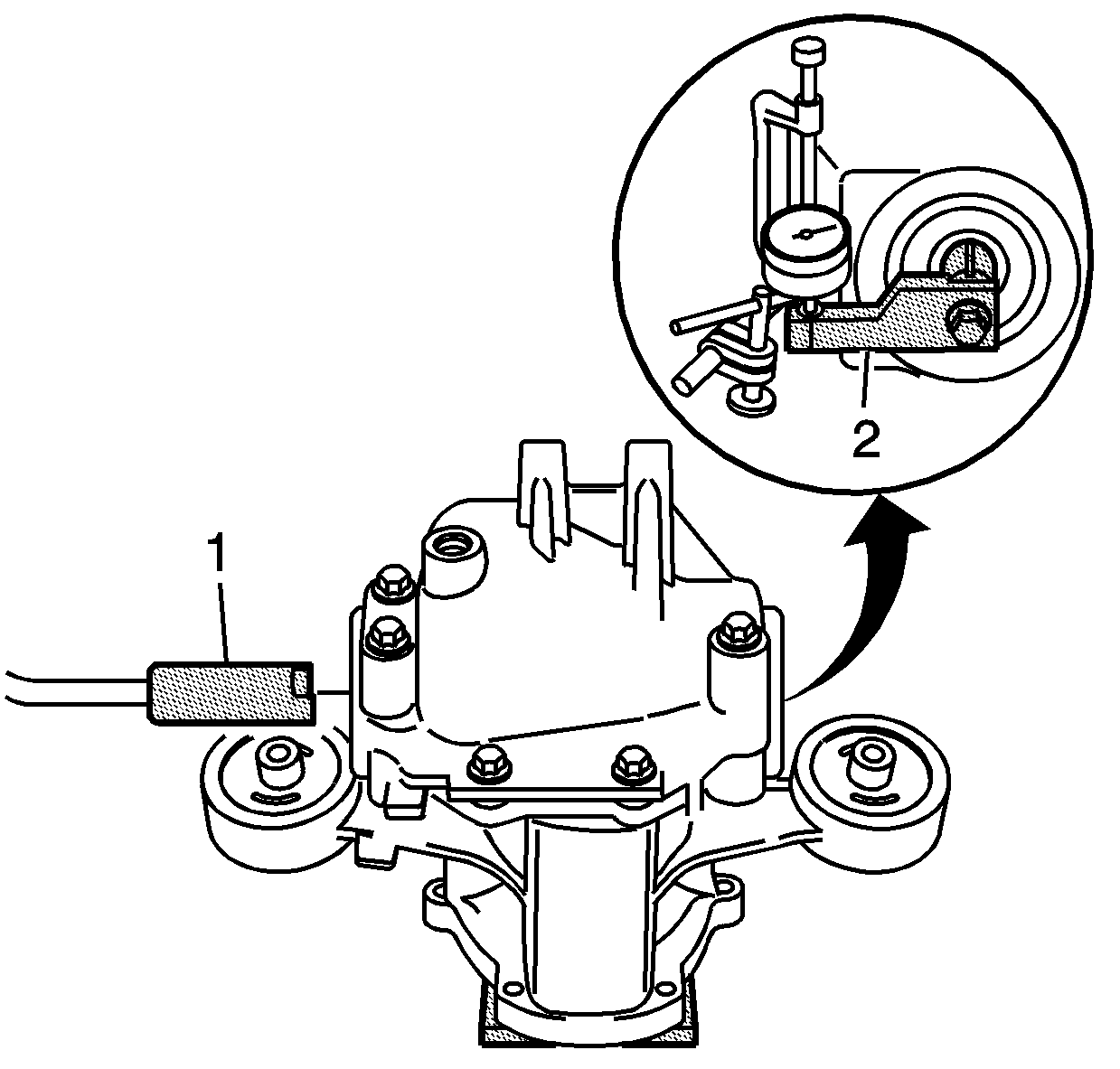
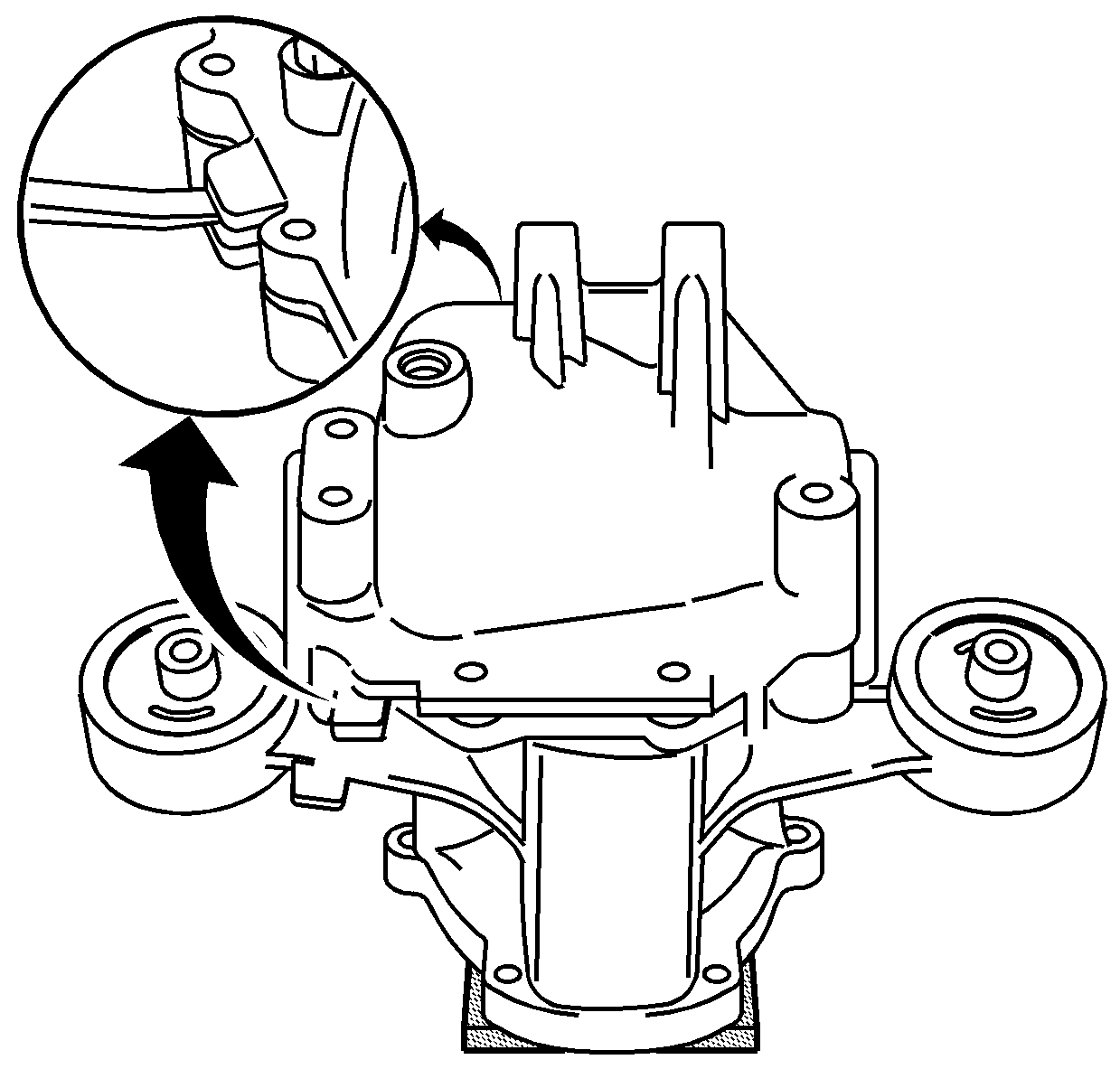
Important: Use the pry points only. Do not pry on the sealing surface.
Important: The rear differential may come out with the cover.
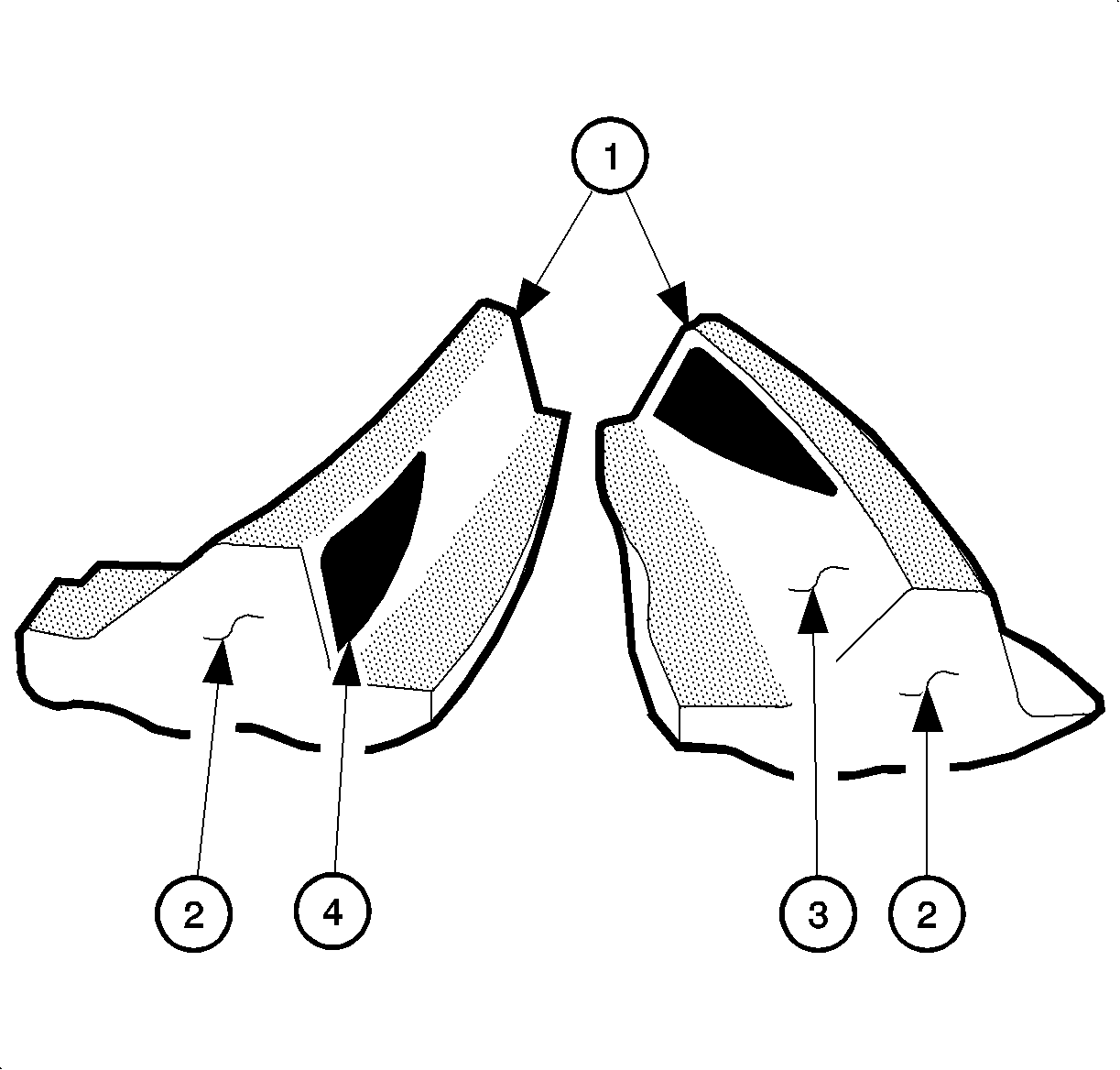
| • | (1) Toe |
| • | (2) Heel |
| • | (3) Coast Side, Concave |
| • | (4) Drive Side, Convex |
Condition
| • | The backlash is correct. |
| • | The pinion depth is incorrect. The pinion gear is too far away from the gear. |
Correction
Increase the thickness of the pinion shim.
Service Hints
How to inspect the pattern:
- Brush gear marking compound on the ring gear teeth.
- Rotate the pinion clockwise 10 times.
- Rotate the pinion counterclockwise 10 times.
- Observe the tooth contact pattern. Make any necessary corrections.
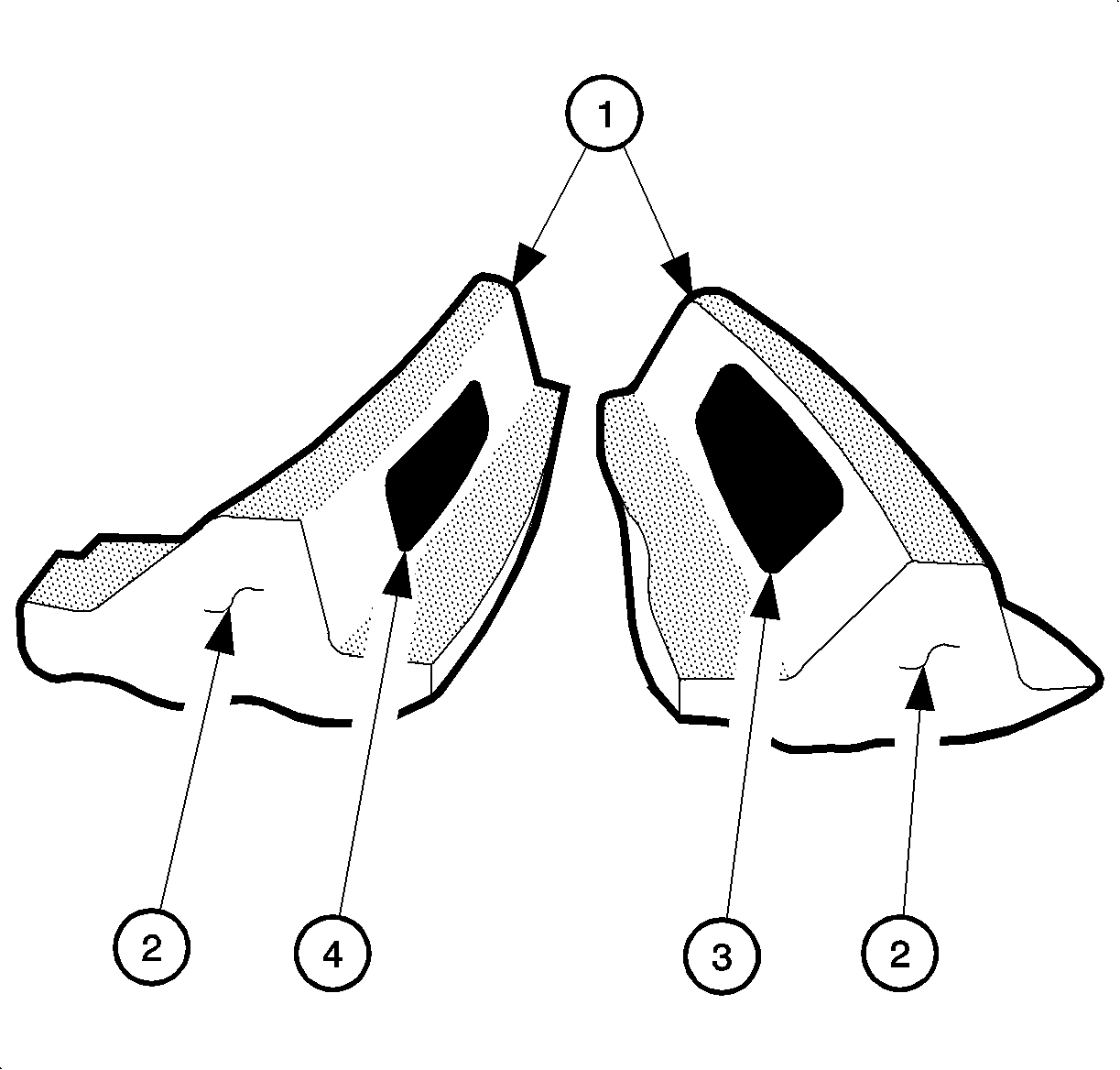
Condition
| • | The backlash is correct. |
| • | The pinion depth is correct (3) (4). |
Correction
Correction may not be necessary.
Service Hints
Loose bearings on the pinion or in the differential case may cause patterns that vary. Inspect the following preload settings:
| • | Total assembly |
| • | Differential case |
| • | Pinion |
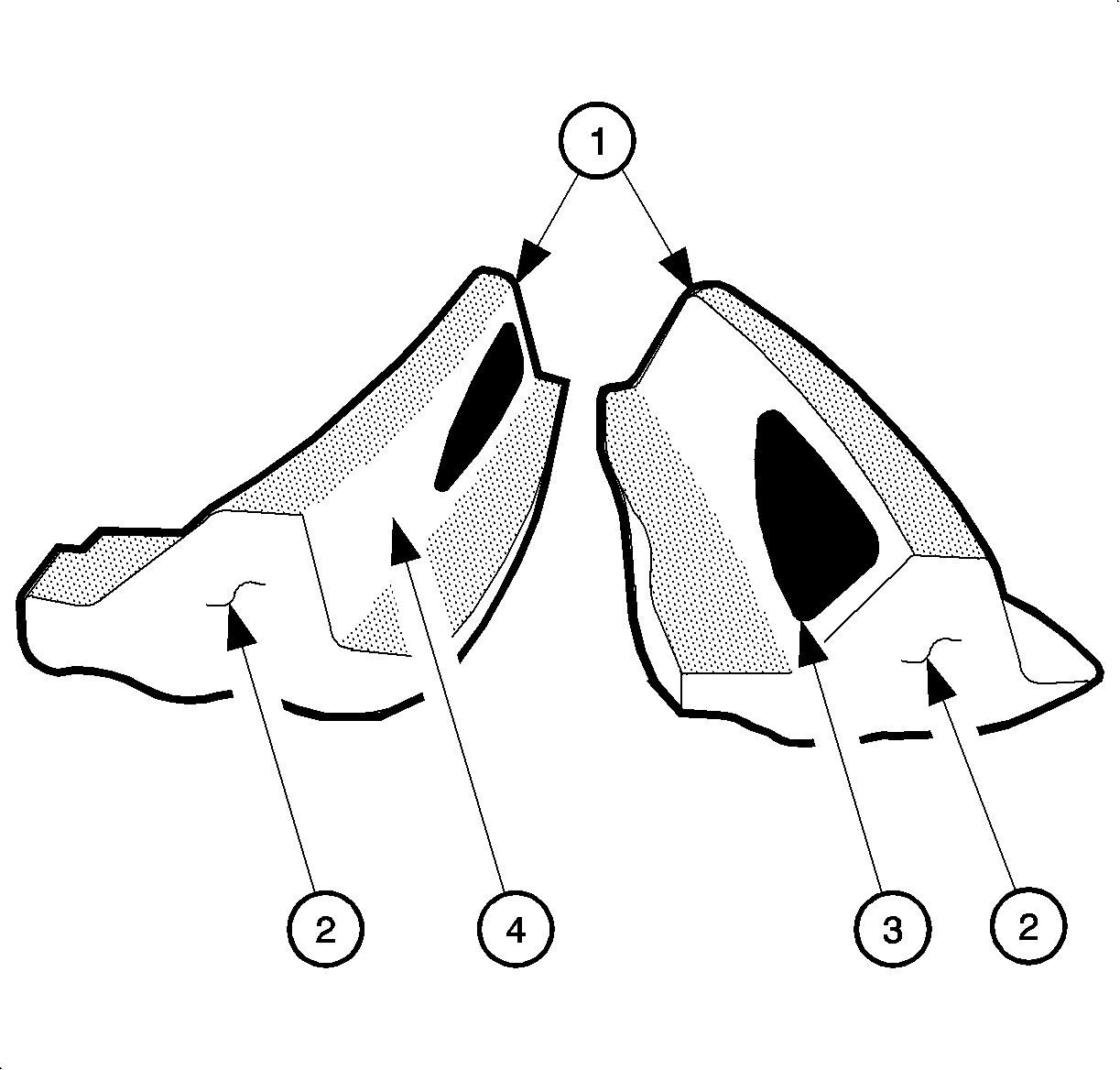
If these settings are correct, look for damage or incorrectly assembled parts.
Condition
| • | The backlash is correct. |
| • | The pinion depth is incorrect (3) (4). |
Correction
Decrease the thickness of the pinion shim.
Service Hints
The shims which adjust the pinion depth are located between the inner pinion bearing and the head of the pinion gear.
Adjustments Affecting Tooth Contact
There are 2 adjustments that affect the tooth contact pattern; backlash and drive pinion depth. The effects of bearing preloads are not readily apparent on hand-loaded tooth contact pattern tests. However, bearing preloads should be within the specifications before proceeding with the backlash and drive pinion adjustments.
Adjust the position of the drive pinion by increasing or decreasing the distance between the pinion head and the centerline of the ring gear. Decreasing the distance moves the pinion closer to the centerline of the ring gear. Increasing the distance moves the pinion farther away from the centerline of the ring gear.
Adjust the backlash by means of the side-bearing adjusting shims which move the case and ring gear assembly closer to, or farther from, the drive pinion. Also use the adjusting shims to set the side bearing preload.
If the thickness of the right shim is increased, along with an equal decrease in thickness of the left shim, backlash will increase.
If the thickness of the left shim is increased, along with an equal decrease in the thickness of the right shim, the backlash will decrease.
